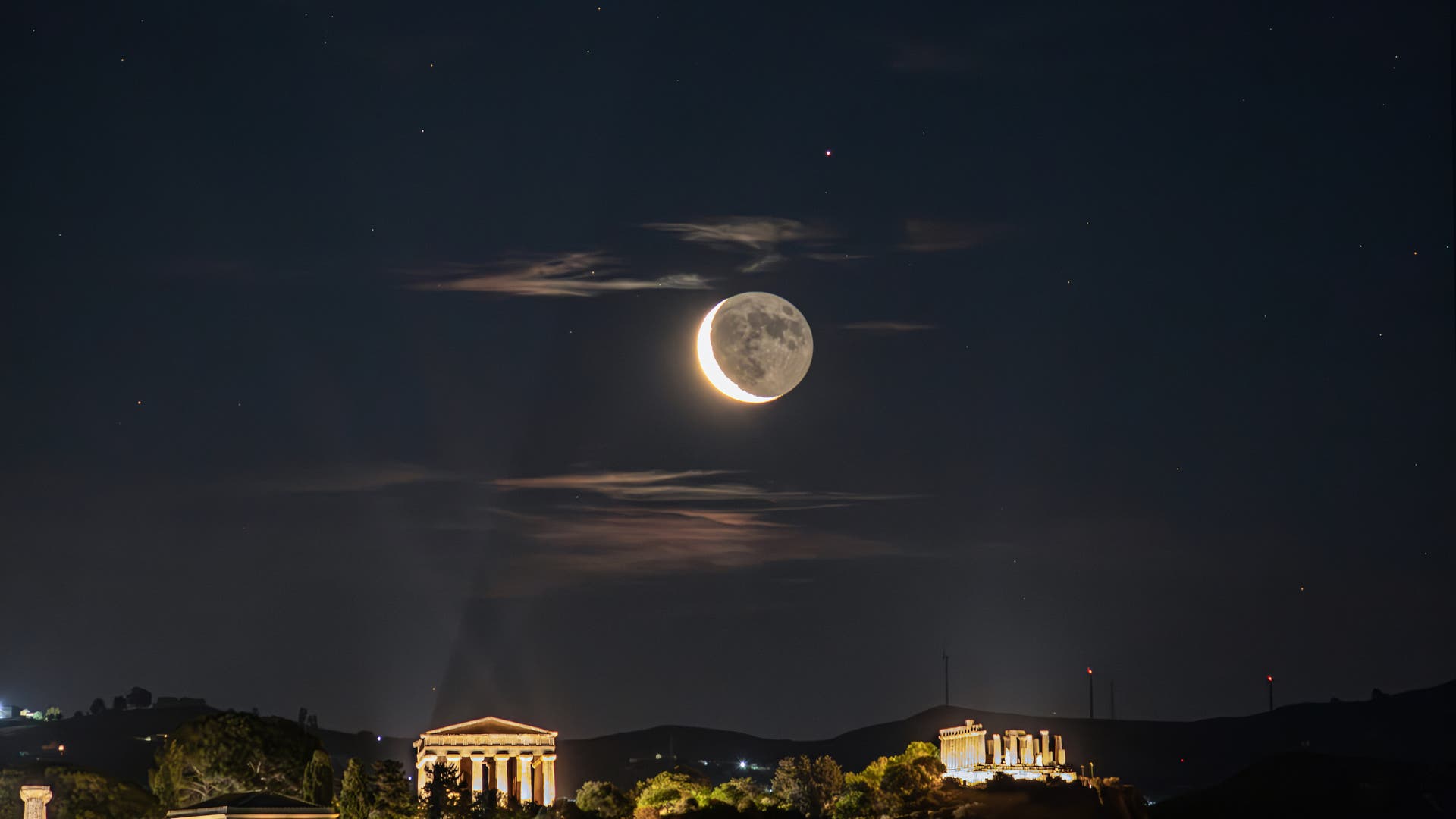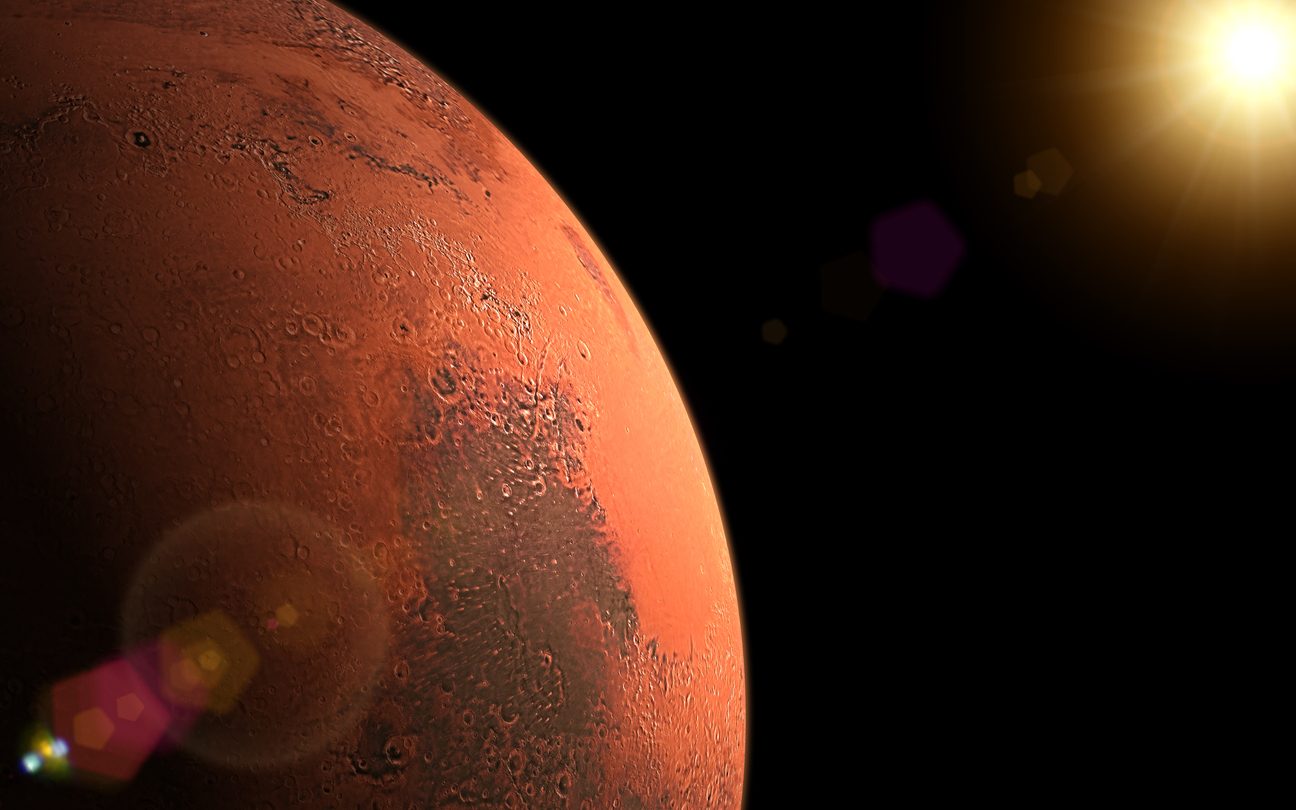At least in theory, about four billion years ago, Mars provided favorable living conditions for some microbes, according to a model study: Protozoa would have survived from converting hydrogen and carbon dioxide into methane. However, due to the special characteristics of the Martian atmosphere, this process led to a significant cooling of the climate, according to simulations. Scientists say Martian microbes, if present, could have helped turn their habitat into an increasingly hostile world.
Extreme drought, bitter cold, and thin air: Mars today seems to offer almost no opportunities for living things as we know them. However, as is now evident from many indicators, this was not always the case: it is assumed that about four billion years ago our neighboring planet still had a relatively dense atmosphere with a high content of carbon dioxide and hydrogen. It is assumed that the greenhouse effect of these gases made a temperate climate possible at the time. There are various indications that this water formed a liquid that saturated the porous crust of the planet and filled large bodies of water. However, as Mars continued to develop, it lost its temperate conditions and evolved into the frigid desert planet it is today. But scientists largely agree that the young planet Mars provided the basic conditions that, in the case of Earth, gave rise to the first microbial life forms.
Hydrogen-based life is possible
One of the most exciting questions in astrobiology is whether life on Mars really existed — or perhaps still exists in shelters. So far, however, there are no solid indications. But you can consider the possibilities and start with “what-if scenarios,” say scientists led by Boris Souteri of the University of Arizona in Tucson. Specifically, they looked at what kind of microbes might have once found good living conditions on young Mars and how their theoretical presence would have affected the evolution of the planet.
As the researchers explain, the hypothetical microbes on Mars are living organisms whose livelihoods depend on the conversion of hydrogen and carbon dioxide into methane. This is known as the ancient concept of terrestrial microbes for the archaeal group. On Earth, unbound hydrogen is rarely found except in isolated environments such as rocks or hydrothermal vents. However, scientists have shown that their abundance in the Martian atmosphere could provide a widely available energy source for methane-generating microbes about four billion years ago. So the gases would have diffused in sufficient quantities in the soil of Mars, which at that time also provided moisture and temperature suitable for life.
The researchers used simulation models to explore the plausibility of this hypothetical scenario as part of their study. In doing so, they linked assumptions about the characteristics of the Martian crust as well as the atmosphere and climate at that time about four billion years ago in a complex way. Model simulations also incorporated biological information about terrestrial microbes that metabolize hydrogen and carbon dioxide into methane. As the team reports, the simulations essentially confirmed that the Martian crust could represent a suitable habitat for the corresponding ecosystem at that time. According to the results, hypothetical Martian microbes could have formed large amounts of biomass.
Bacterial climate change
The scientists then modified their simulation models to investigate the consequences of hypothetical microbe activity. It turns out that converting atmospheric hydrogen into methane would have caused global cooling and increased ice on the planet. As the researchers explain, this effect, which does not apply to Earth’s nitrogen-rich atmosphere, is related to the gaseous atmosphere of Mars dominated by carbon dioxide: with this composition, hydrogen eventually develops a stronger greenhouse effect than methane. According to the model’s simulations, this correlation could have been felt in the case of Mars: “By removing hydrogen from the atmosphere, the microbes would have cooled the planet’s climate significantly,” says Souteri.
That is, the intense biological activity would have caused the climate change that would have helped make the planet’s surface hostile to life at a very early stage. Thus, the microbes would have robbed themselves of their livelihood. “Temperatures would have dropped dramatically, requiring them to go deeper into the crust. Another problem these microbes would have next was that the Martian atmosphere had essentially disappeared. So their energy source would have dried up and they would have to find an alternative energy source. It is difficult to say how long Mars could have provided life opportunities.”
This is all hypothetical, of course – to what extent these scenarios have actually been implemented on Mars remains unclear. However, extensive research on our neighboring planet could one day provide clues to whether methane-producing microbes actually existed there before. It is even possible that they are still in an underground shelter. But as the researchers stress, their study demonstrates at least something fundamental: “The study demonstrates the potential for feedback between organisms and the environment to threaten the viability of a planet,” the scientists wrote.
Source: University of Arizona, professional article: Natural Astronomy, doi: 10.1038/s41550-022-01786-w

“Alcohol buff. Troublemaker. Introvert. Student. Social media lover. Web ninja. Bacon fan. Reader.”






More Stories
Conjunction of the Moon and Mars
Skin rash after eating asparagus? What could be behind it?
Entomologists discover a long-extinct wasp | Sciences